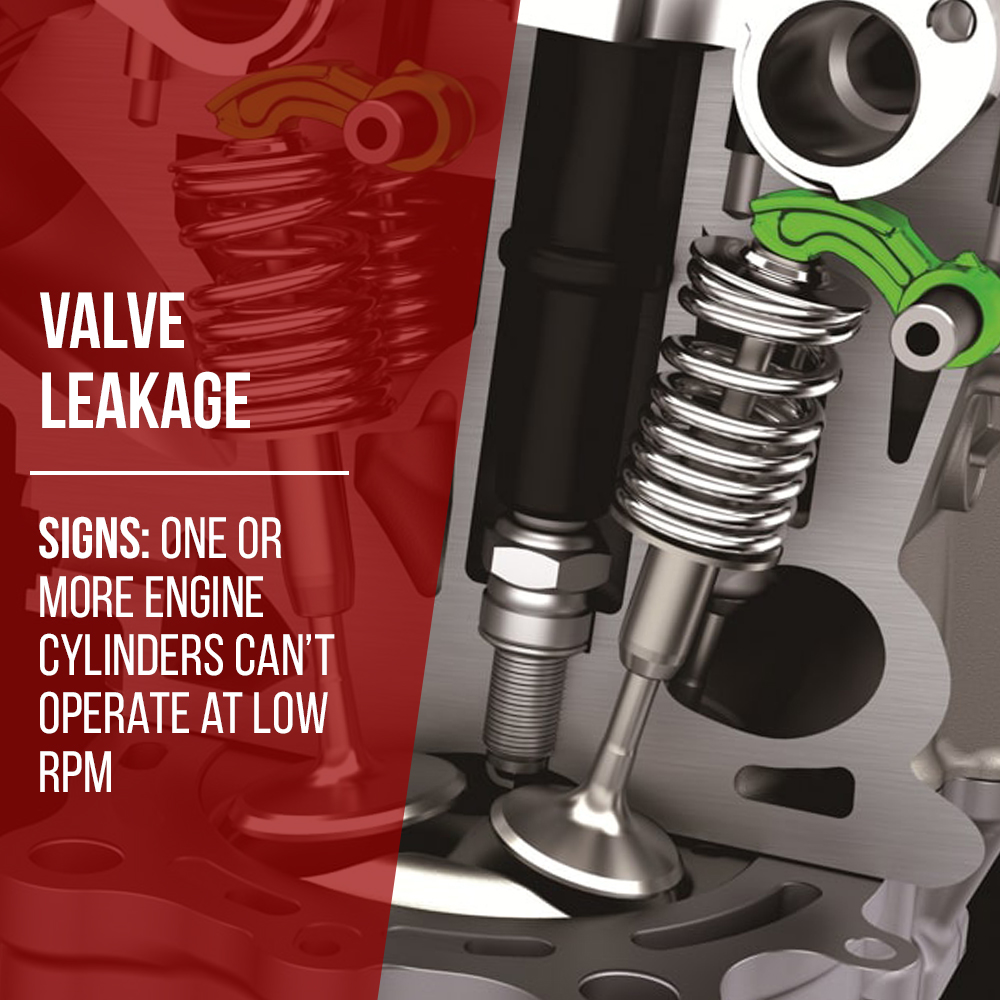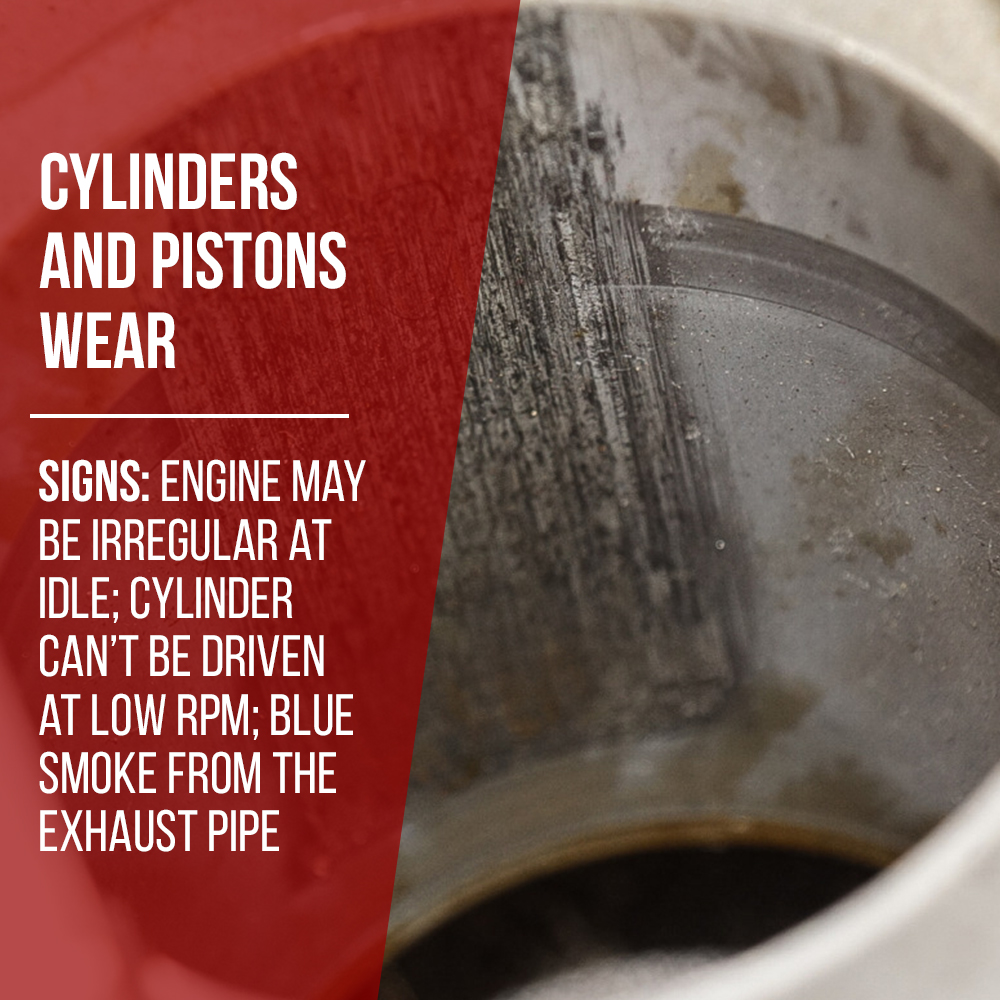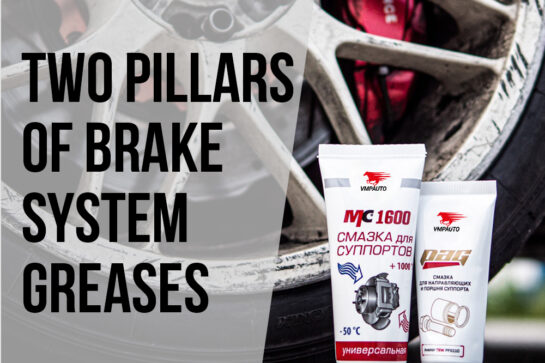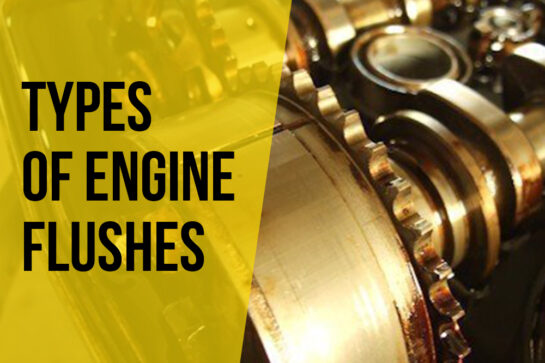3 causes of decreased compression
It’s no secret that compression is one of the main conditions for the stable engine operation. What are the most common causes of decreased compression and what should we do about it?
1. Piston rings carbonization
Signs: increased consumption of engine fluid, blue smoke from the exhaust pipe
It is inevitable that when using an engine, unburned fuel accumulates in the piston ring grooves. Later it turns into carbon deposits. As a result the rings get carbonized and their normal adherence to the cylinder walls gets impaired. It leads to reduced compression in the cylinders and increased oil consumption.
2. Valve leakage
Signs: one or more engine cylinders can’t operate at low rpm
There are intake and exhaust valves at the top of each cylinder. Gases enter the cylinders through the intake valves and exit through the exhaust ones. If the valves are overheated or worn, premature leakage of gases can occur, resulting in decreased compression.
3. Cylinders and pistons wear
Signs: engine may be irregular at idle; cylinder can’t be driven at low rpm; blue smoke from the exhaust pipe
As a rule, scuffing occurs in the cylinders due to the abrasives in the friction pairs, a lack of lubrication or pistons expansion due to overheating. This is a common problem for cars with high mileage.
Faced with these problems, many motorists are doomed to think about overhaul. VMPAUTO offers an alternative!
Use RESURS foam carbon cleaner to clean the combustion chamber, RESURS Decarboil to remove carbon deposits and RESURS Total to reduce engine wear. Increase compression by up to 40% without engine disassembling!






